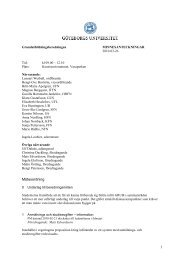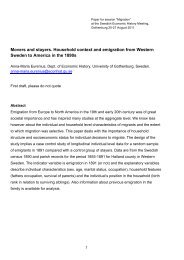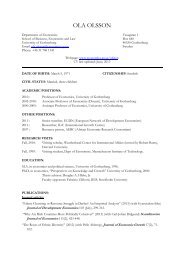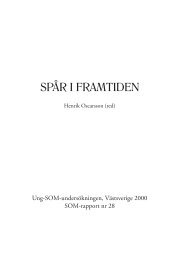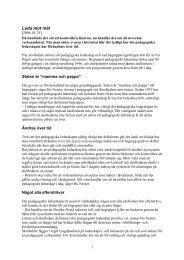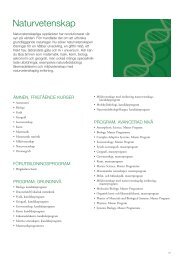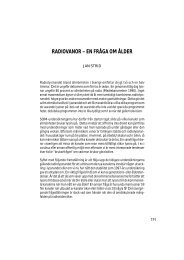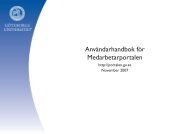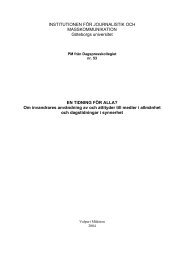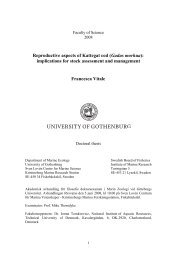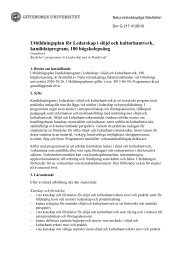development of small-scale intermodal freight transportation in a ...
development of small-scale intermodal freight transportation in a ...
development of small-scale intermodal freight transportation in a ...
You also want an ePaper? Increase the reach of your titles
YUMPU automatically turns print PDFs into web optimized ePapers that Google loves.
Figure 1-6<br />
German piggyback-transport (Huckepack-Verkehr <strong>in</strong> German) shortly after<br />
World War II. (Source: Kombiverkehr, market<strong>in</strong>g brochure, 1991, p. 4).<br />
The greater part <strong>of</strong> the term<strong>in</strong>al network <strong>in</strong> former West Germany was built over a short<br />
period <strong>of</strong> time <strong>in</strong> l<strong>in</strong>e with an ambitious plan launched <strong>in</strong> September 1967 by Georg<br />
LEBER, then the M<strong>in</strong>ister <strong>of</strong> Transport, and thereby referred to as the Leber plan. The total<br />
fund<strong>in</strong>g was DM 1 billion (ECU 500 million) <strong>of</strong> which DM 250 million (ECU 125 million)<br />
were made available for <strong>in</strong>vestments <strong>in</strong> <strong><strong>in</strong>termodal</strong> transport technology (BUKOLD, 1996,<br />
pp. 258-263). A second political <strong>in</strong>itiative was presented by the German Government <strong>in</strong><br />
1978, that declared that the amount <strong>of</strong> <strong><strong>in</strong>termodal</strong> transport must be <strong>in</strong>creased threefold by<br />
1985 as a consequence <strong>of</strong> the energy crisis (BAYLISS, 1988). Investment programmes issued<br />
by the government <strong>in</strong>cluded DM 980 million (ECU 500 million) 1979-85 and DM 560<br />
million (ECU 290 million) 1986-90.<br />
Furthermore, the German government has been very active <strong>in</strong> technology <strong>development</strong><br />
schemes. In the late 1970’s, one such scheme helped the emergence <strong>of</strong> more or less successful<br />
technologies such as the Umschlagfahrzeug Lässig Schwanhäusser (ULS), the<br />
R<strong>in</strong>ger System, LogMan’s Conta<strong>in</strong>er FTS, the Hochste<strong>in</strong> System, the Wieskötter System,<br />
the DEMAG System and the System Aachen 18 .<br />
In Sweden, handl<strong>in</strong>g equipment for some 40 term<strong>in</strong>als was bought <strong>in</strong> the late 1960’s. The<br />
13 largest term<strong>in</strong>als were equipped with gantry cranes capable <strong>of</strong> lift<strong>in</strong>g all types <strong>of</strong> ITUs<br />
up to a weight <strong>of</strong> 30 metric tons. Smaller term<strong>in</strong>als were equipped with fork lift trucks,<br />
side-load<strong>in</strong>g trailers 19 or <strong>small</strong>er cranes that limited the term<strong>in</strong>als to <strong>small</strong>er load units or<br />
18 The systems mentioned are all described <strong>in</strong> the detached appendix.<br />
19 A side-load<strong>in</strong>g trailer is a transfer equipment mounted on a lorry or semi-trailer which is capable <strong>of</strong> lift<strong>in</strong>g a<br />
conta<strong>in</strong>er from the ground as well as transferr<strong>in</strong>g the conta<strong>in</strong>er to a rail wagon. For further details, see the detached<br />
appendix.<br />
11





